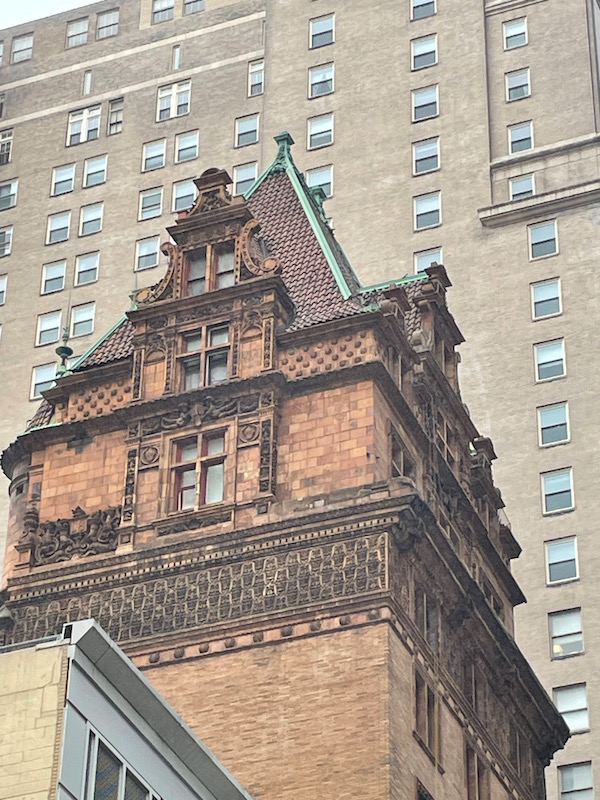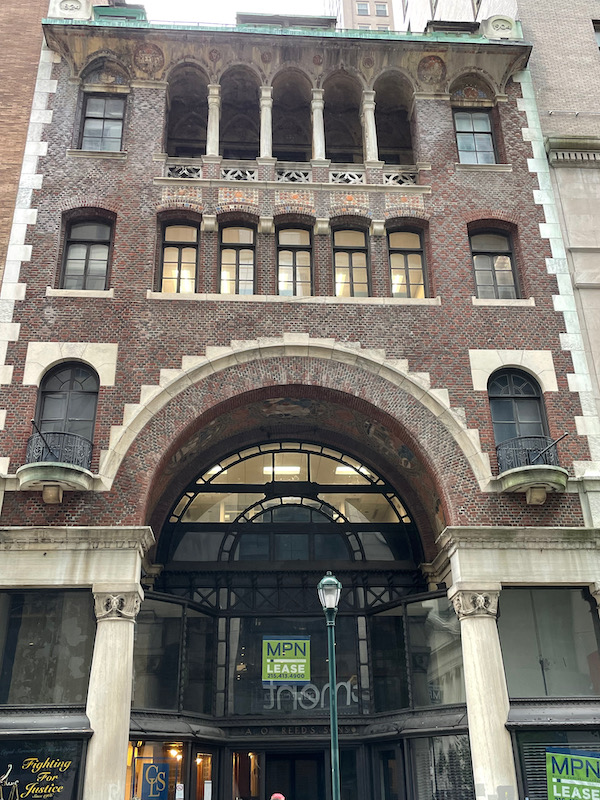Our Blog - Philadelphia, PA
During our recent trip to the US, we spent a day in Philadelphia seeing the sights. While Tom has been to Philly (when he was young), I don't remember ever having spent time in Philly. It was founded in 1682 by William Penn and has quite a few historical buildings. It was the host of the First and Second Continental Congresses and was where the Declaration of Independence was adopted. Philadelphia served as capital of the United States for much of the colonial and early post-colonial periods, including for a decade, from 1790 to 1800, while Washington DC was being constructed and prepared to serve as the new national capital. We had 1 full day there was all, so we focused on the major sites.
As we started our walking tour, we walked through both the Rittenhouse and Society Hill neighborhoods, which both had interesting architecture and quite a few very nice houses. There are lots of red brick houses there, which reminds us of Toulouse. The typical 18th and 19th century house is a "row house", which is basically a townhouse. Some of the oldest ones are on Elfreth's Alley, that you will see shortly. The largest concentration of these original 18th and 19th century row houses are in Society Hill. There was a section near our B&B that had quite a few bay windows in different forms.
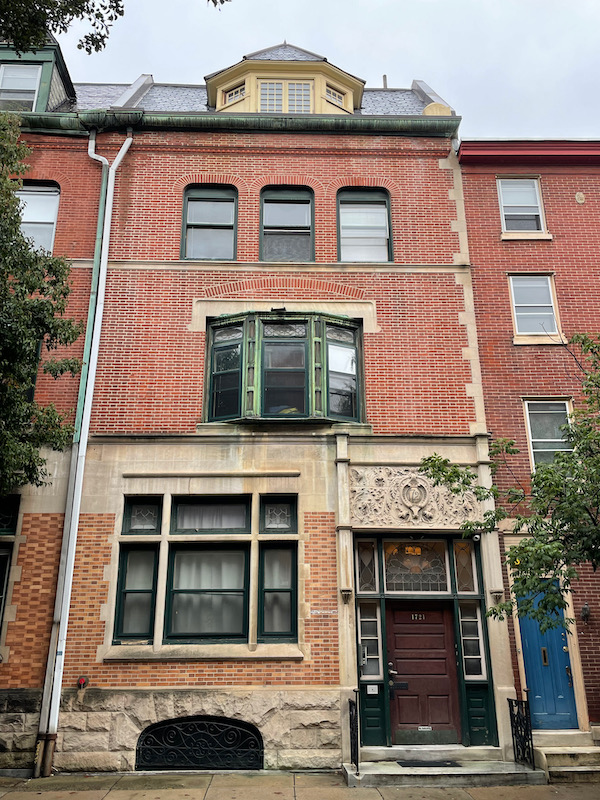
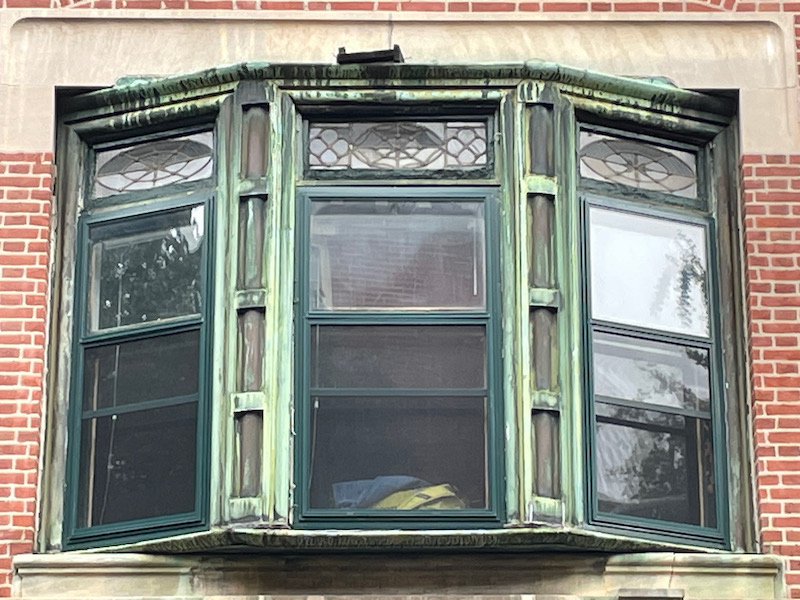
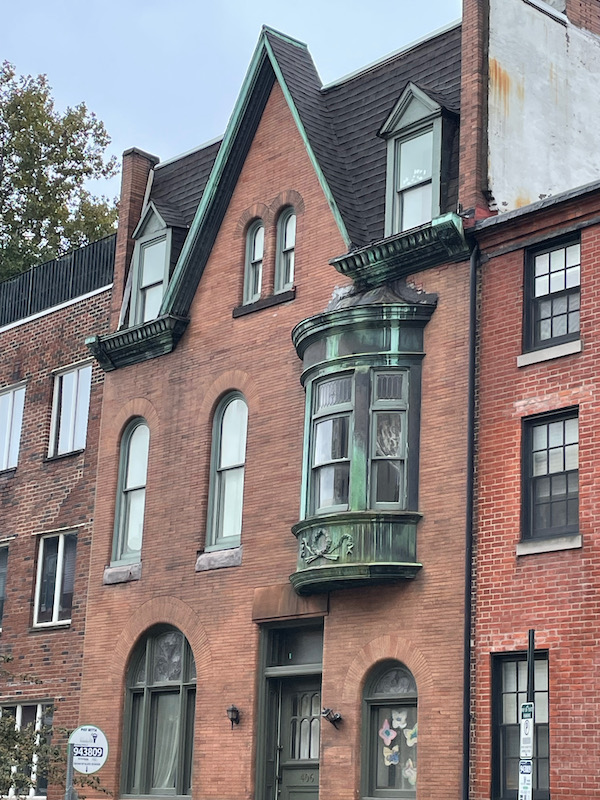
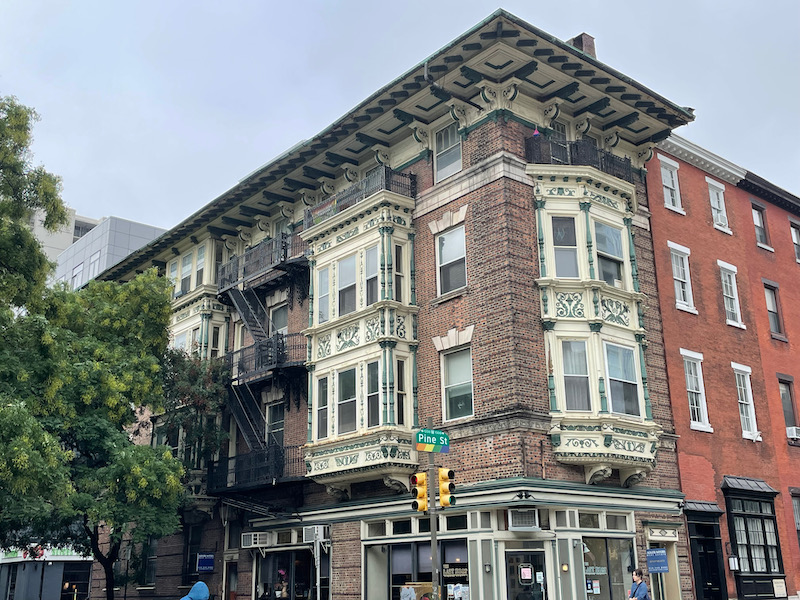
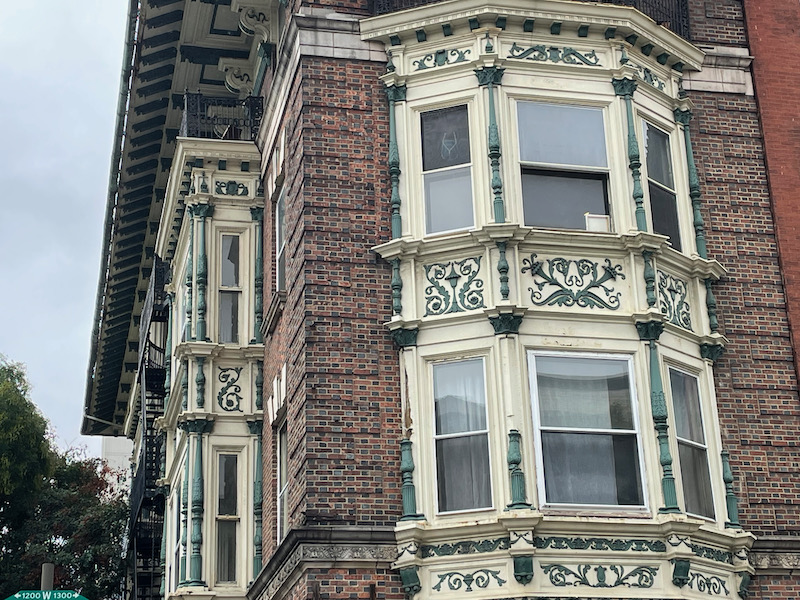
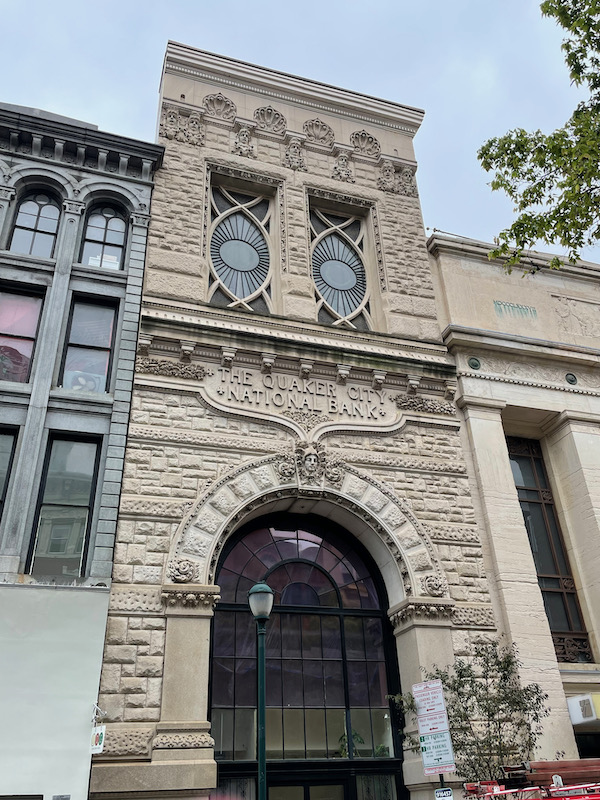

These are from the Society Hill neighborhood, with 2-to-4 story brick rowhouses in Federal and Georgian architecture. Here we see "twin" buildings with excellent ironwork balconies. We saw quite a few that have this type of metalwork on the balcony.
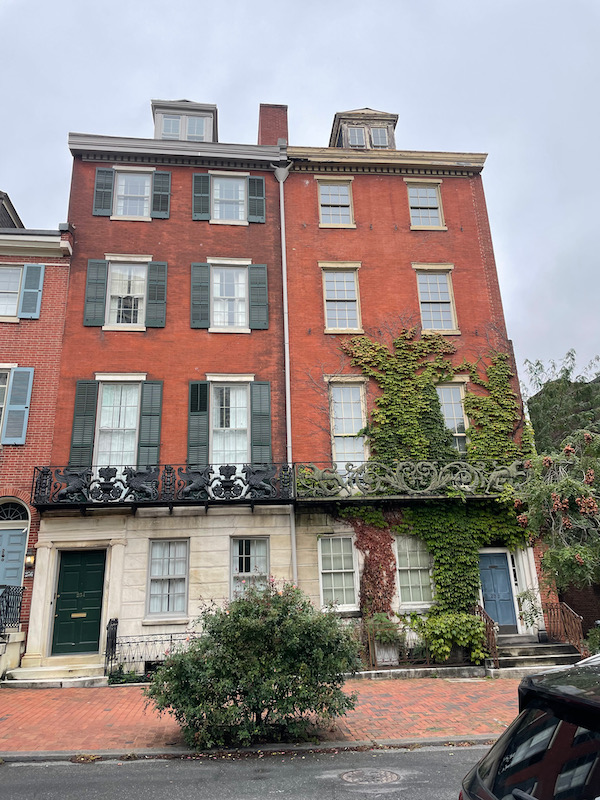
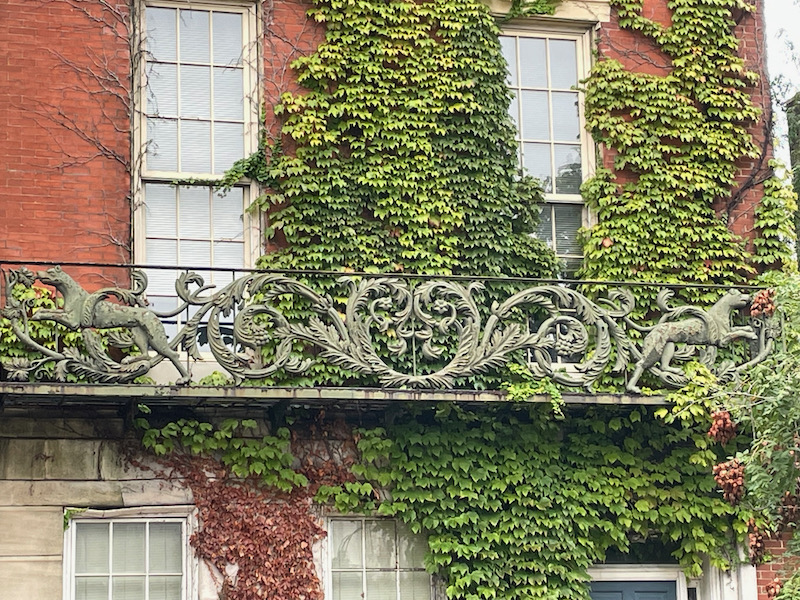
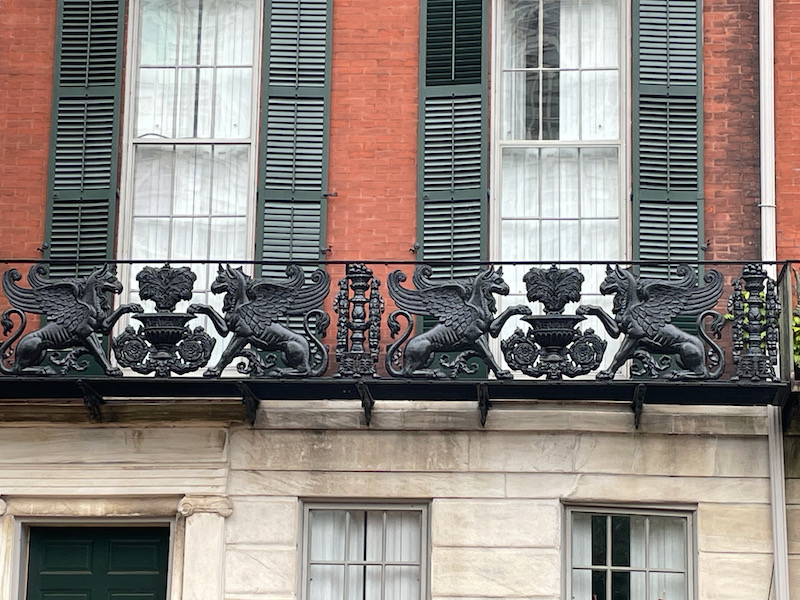

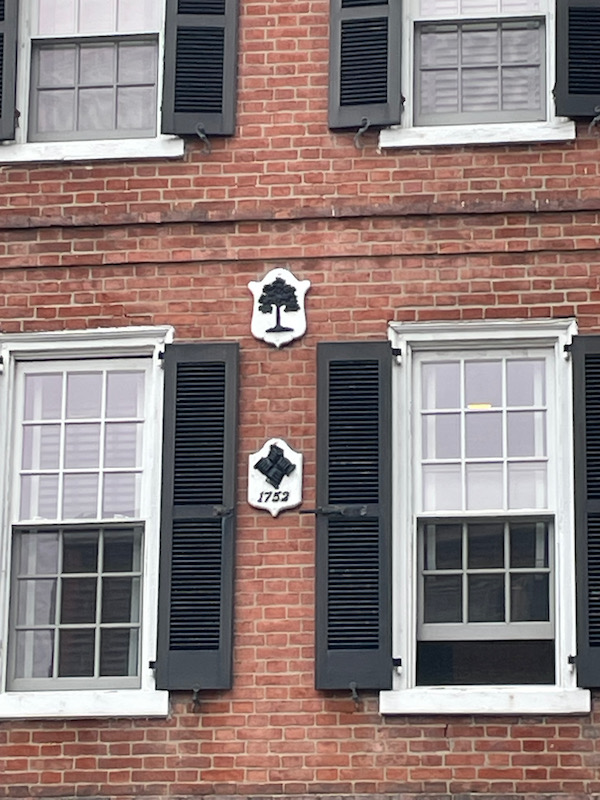
This may or may not actually be the house that Betsy Ross lived in. While information from several surviving family members says this is the house, the best archival evidence indicates the house would have been adjacent to this one. The 1937 Philadelphia Guide noted that, after the current Betsy Ross House was selected as "the Flag House", the adjacent building where Ross may have indeed lived was torn down to lessen the hazards of fire". Since we had limited time, we decided to just look at it and not take the tour.

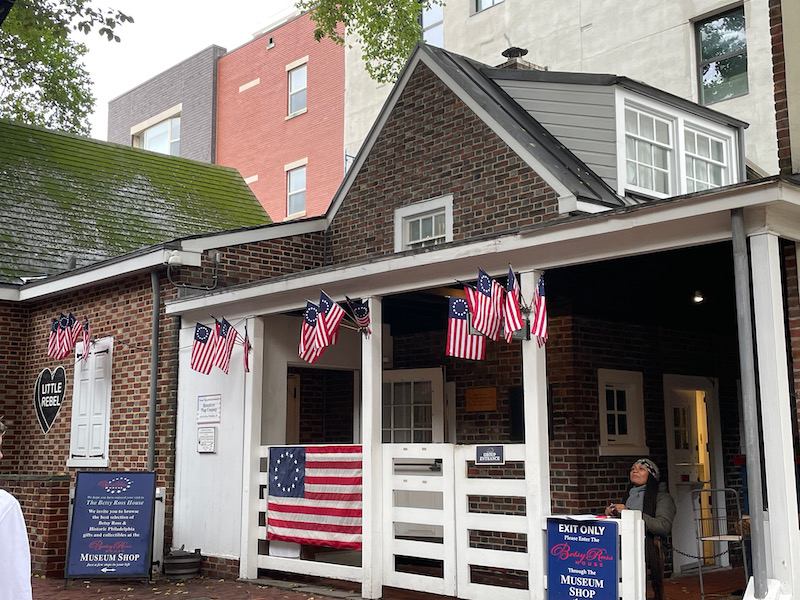
Elfreth's Alley dates from 1703 and has a set of 32 original houses dating from 1703 to 1836. Most of them are actually private homes (with signs that indicate that) but 2 of them have been turned into a museum. The alley contains 18th-century working-class houses, which is different from the preserved "grand mansion" houses in Society Hill.
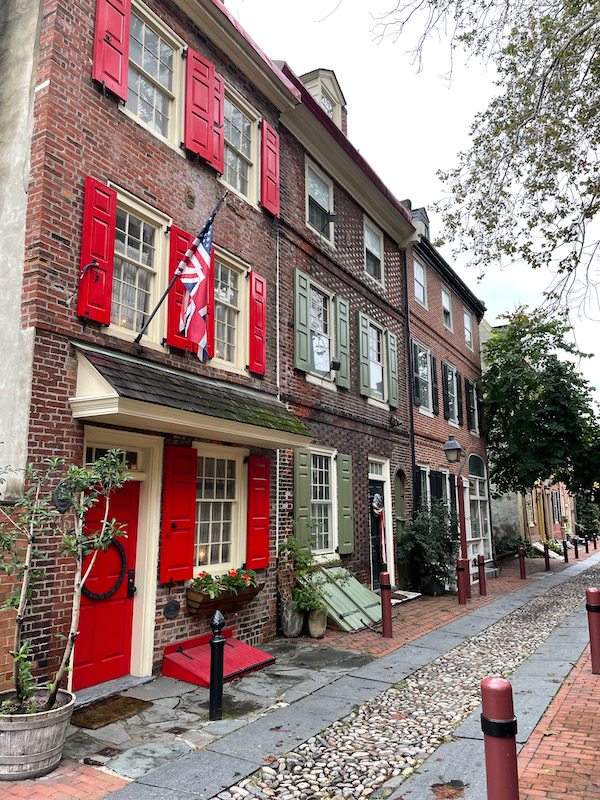
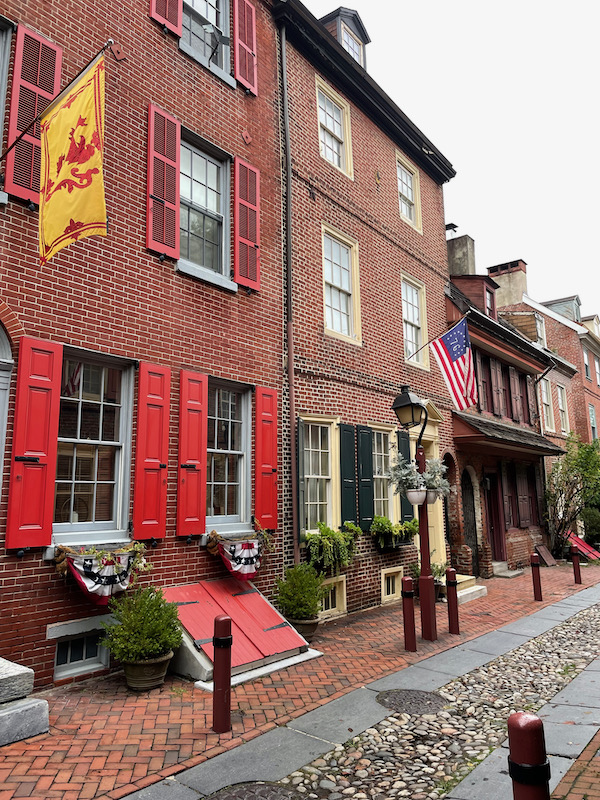
A piece of trivia: in 1829, the Pennsylvania Horticultural Society hosts its first flower show, the nation's largest and longest-running horticultural event. It was at this event that the poinsettia and the chrysanthemum were introduced to the American public.
Built as the Philadelphia County Courthouse, Congress Hall was home to the US Congress from 1790-1800, when Philadelphia served as the temporary capital of the United States. Members of the House of Representatives met on the first floor, while the Senators met upstairs. We were able to visit the first floor but not upstairs, as there was renovation work going on. The speakers chair is the only "original" piece of furniture while everything else are reproductions. One interesting thing that the guide mentioned was that one of the ways that they were able to know what everything looked like (including the carpet) was from drawings in political cartoons.
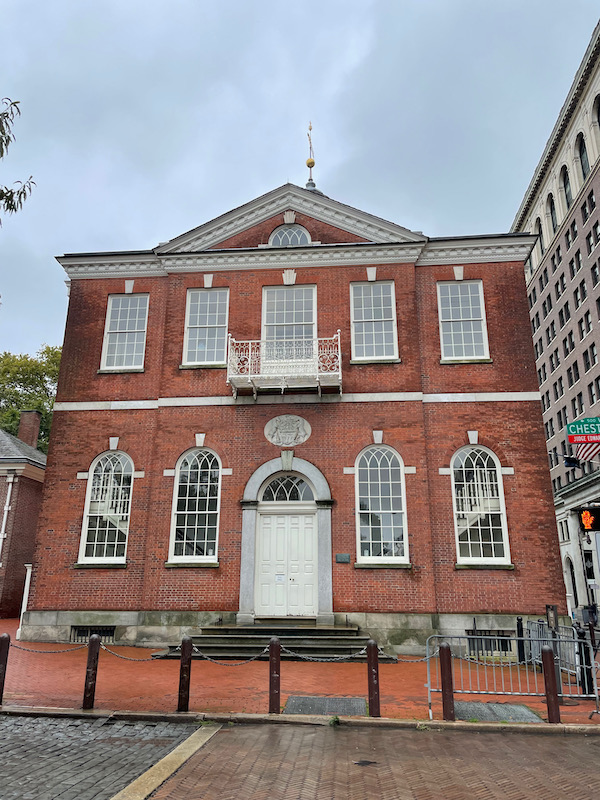
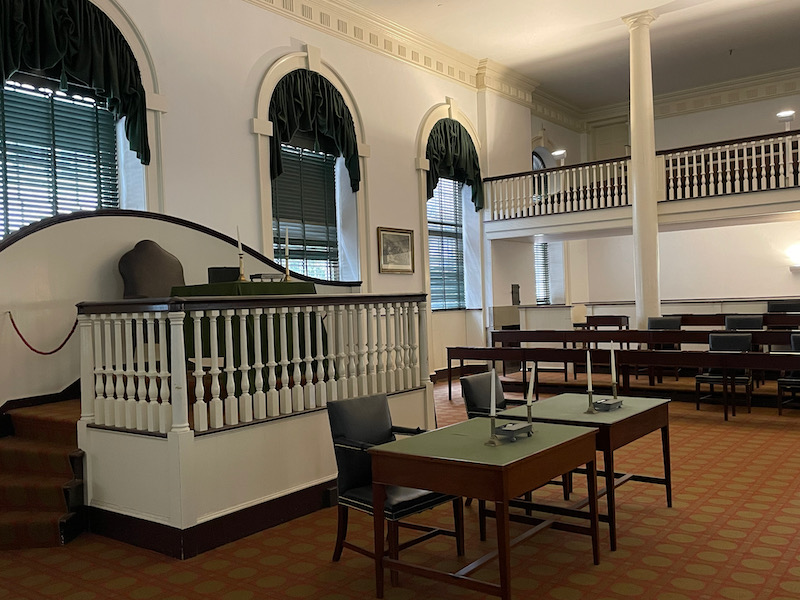
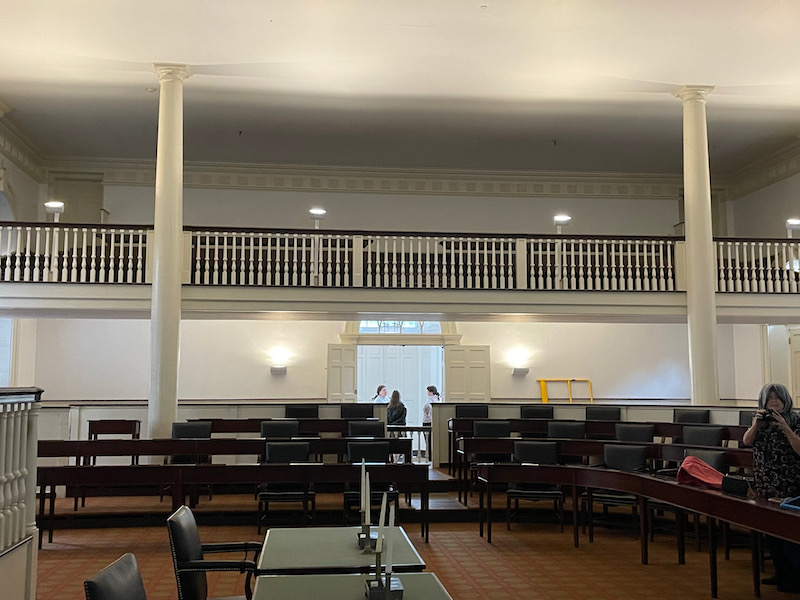
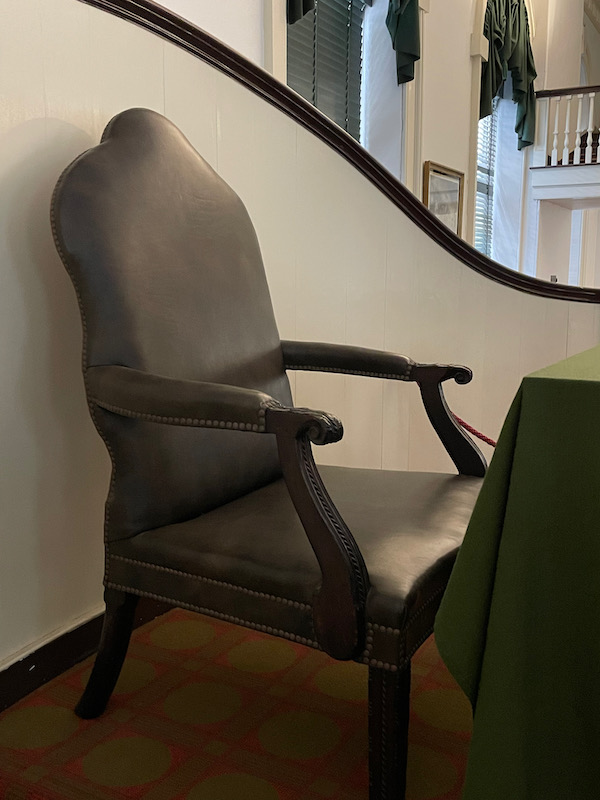
They also knew where everybody sat due to one of the Representatives being bored and drew out a seating chart.
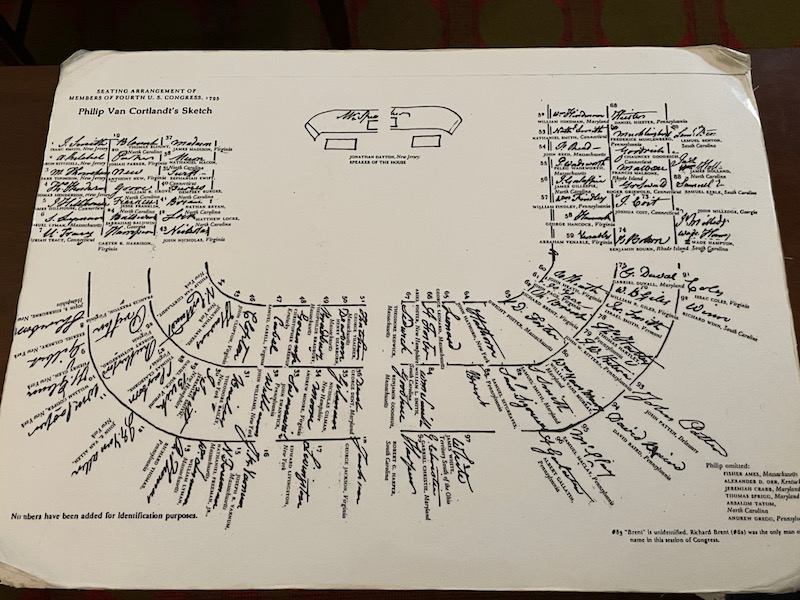
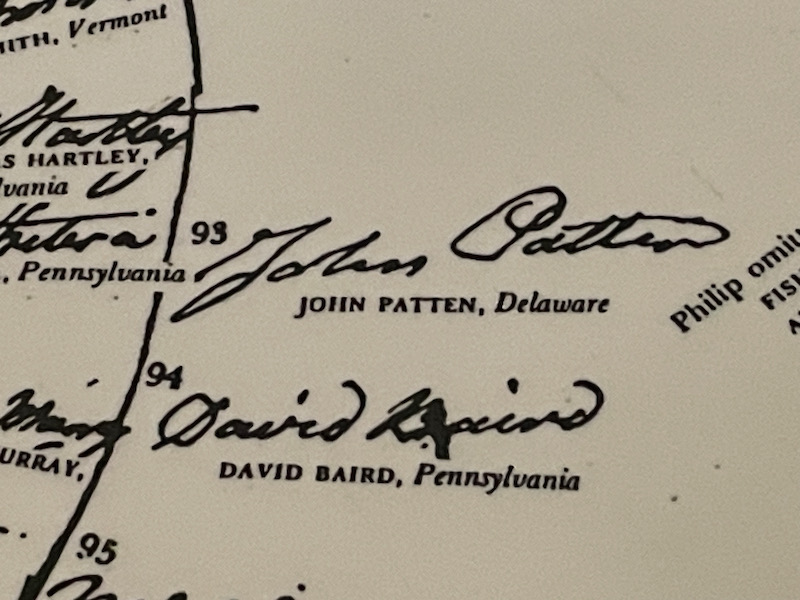
Here is Tom, acting like a Representative and listening intently to the discussion going on.
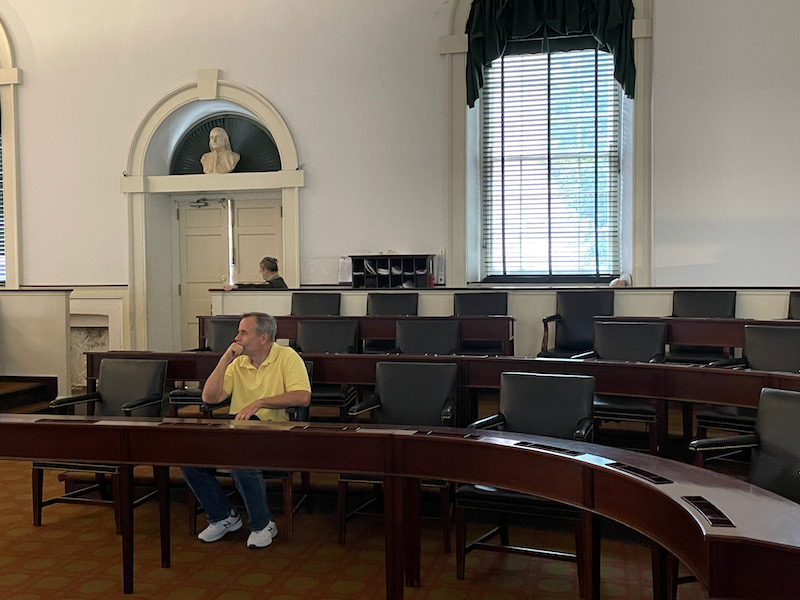
Right next door to Congress Hall is Independence Hall (in fact, there is only one entry point for both buildings). The building dates from 1753 and originally served as the Pennsylvania State House. It has a red brick facade, designed in Georgian style. It was here where both the United States Declaration of Independence and the United States Constitution were debated and adopted. A convention held in Independence Hall in 1915, presided over by former U.S. president William Howard Taft, marked the formal announcement of the formation of the League to Enforce Peace, which led to the League of Nations in 1920 and the United Nations in 1945, a quarter century later. In front is a statue of George Washington.
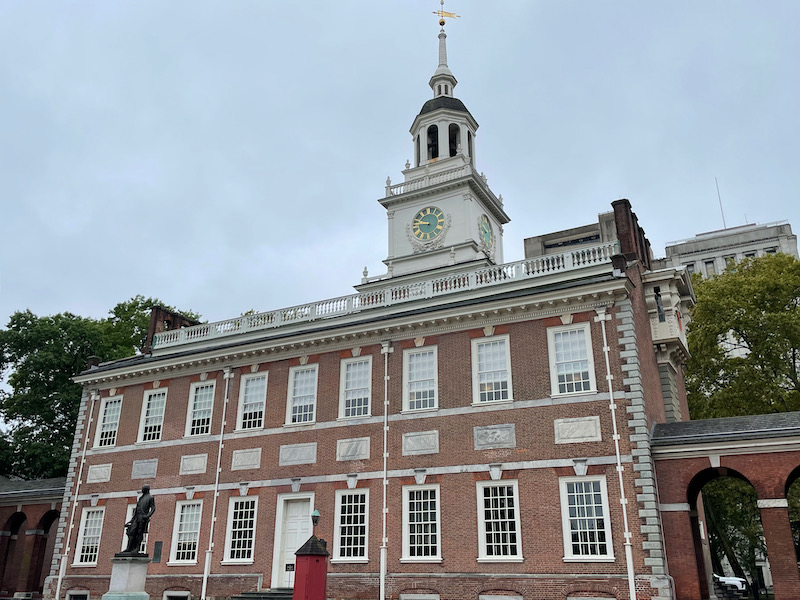
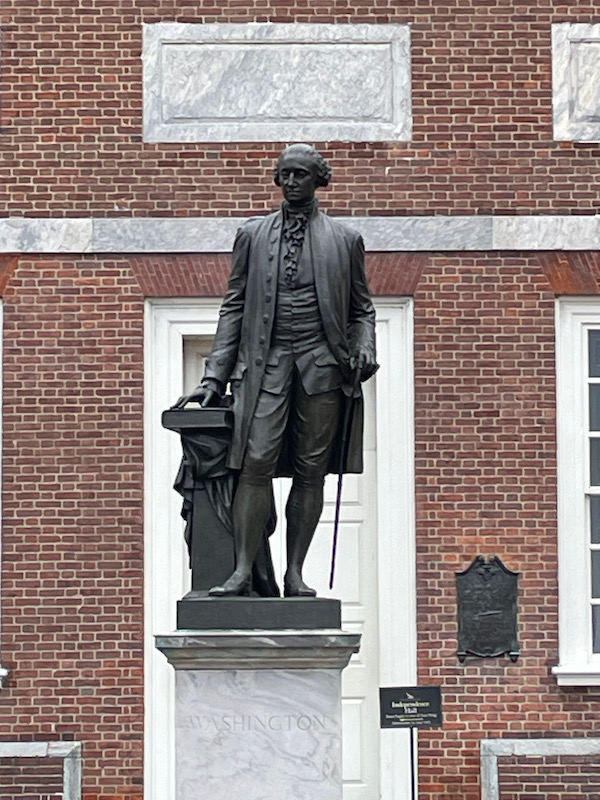
Here is the back-side of the building.
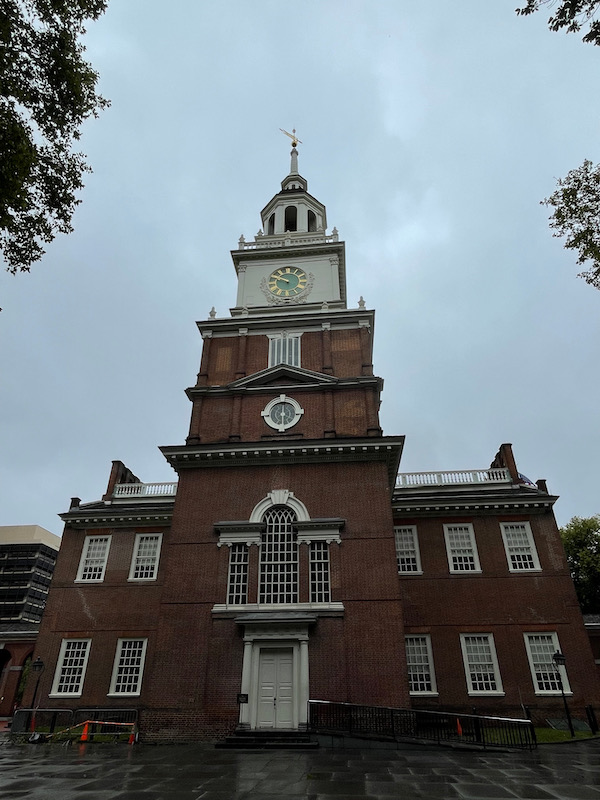
In the West Wing of the building is an exhibit called "The Great Essentials", which showcases original printed copies of some very old documents. It was VERY dim in the room so the pictures are not ideal. This first one is the George Washington copy of the final draft of the Constitution.

This is the John Nixon copy of the Declaration of Independence, which he read from on a platform behind Independence hall, marking the first time Philadelphians had actually heard the words of the Declaration of Independence.
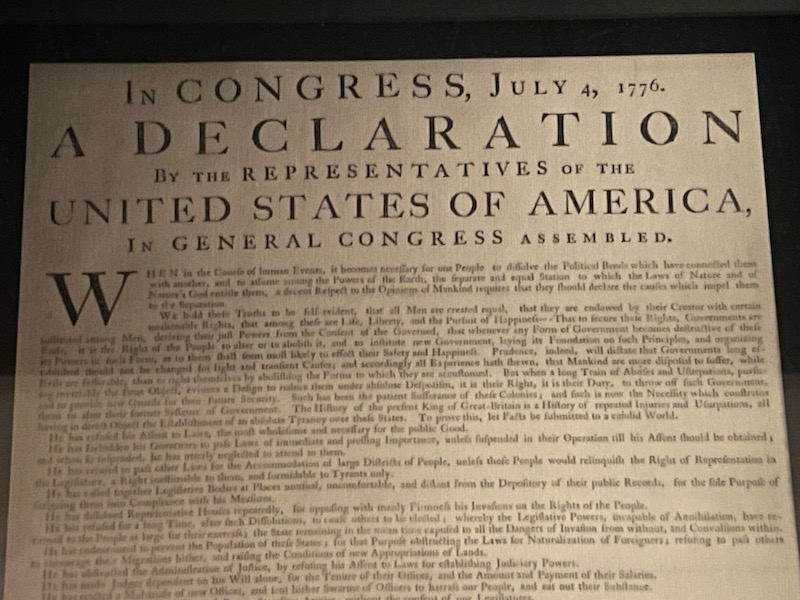
In addition to the clock in the spire, this is called the "Stretch Clock". In 1753, Thomas Stretch erected the first clock at Independence Hall, this large clock dial and masonry clock case, at the west end of the structure. It was restored in 1973.
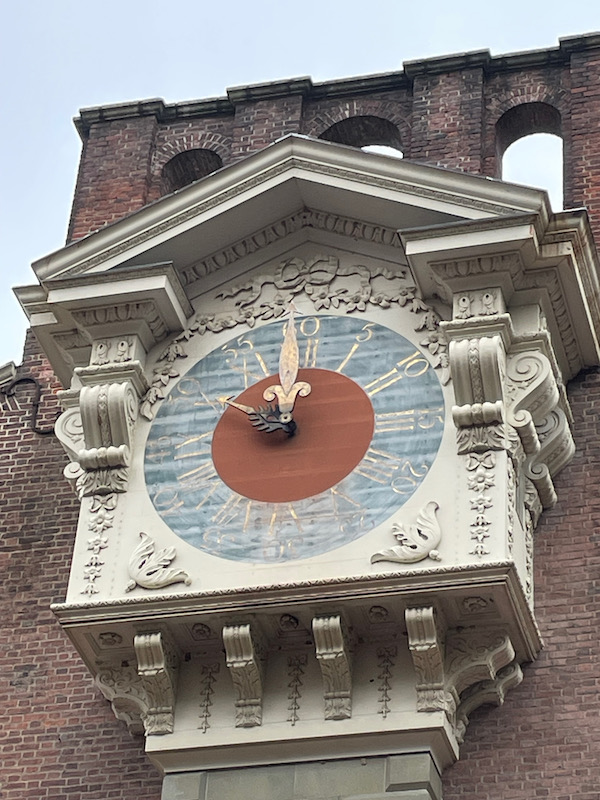
We then headed inside for the short guided tour, which showed 2 rooms. Here is the entry foyer with the strong moldings, and the staircase up to the 2nd floor.
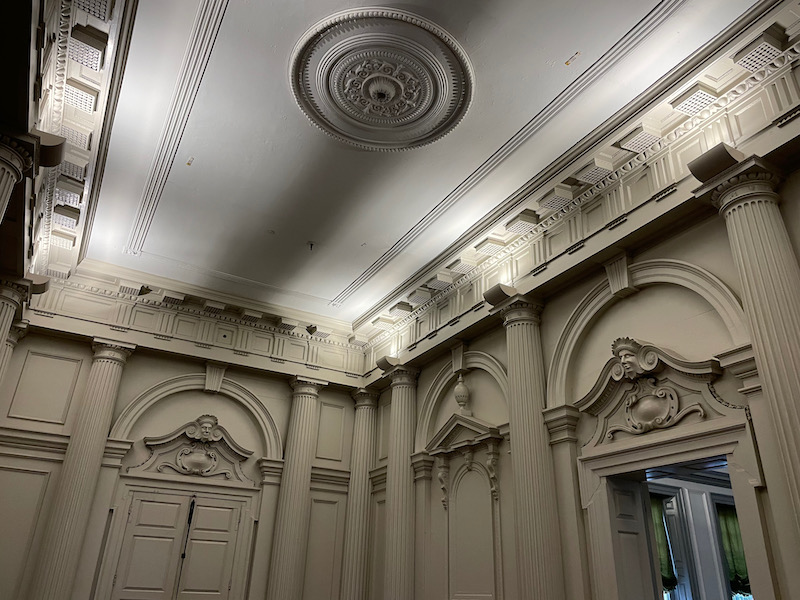
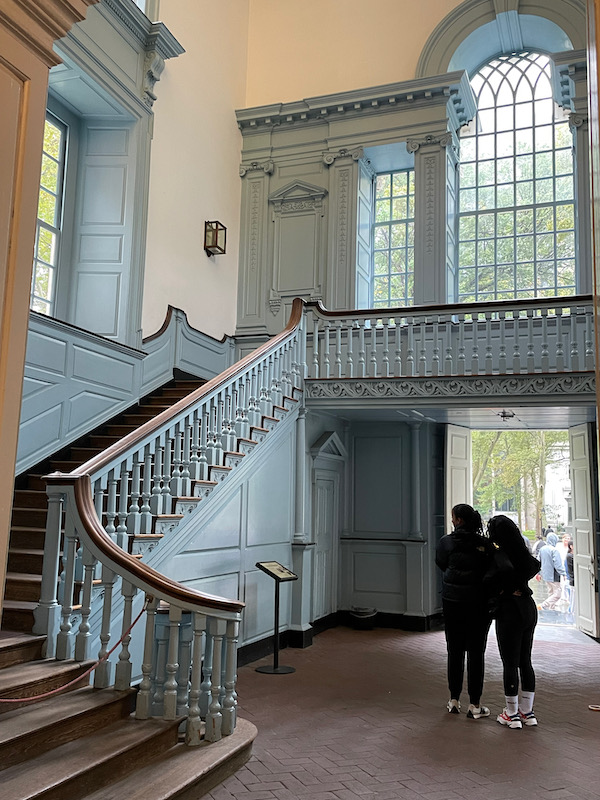
The first room is where the Supreme Court of Pennsylvania heard court cases starting in 1743. The courtroom contained a judges' bench, jury boxes, prisoner's dock, and a table for the lawyers.
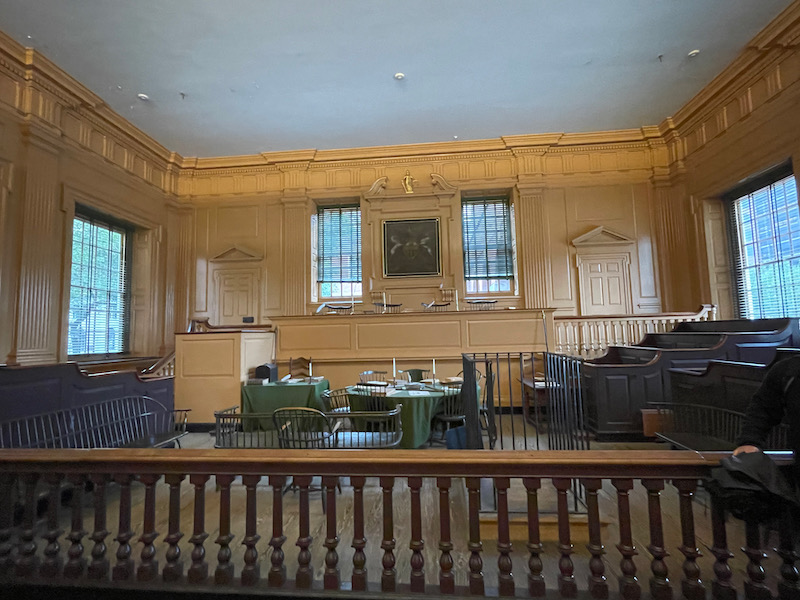
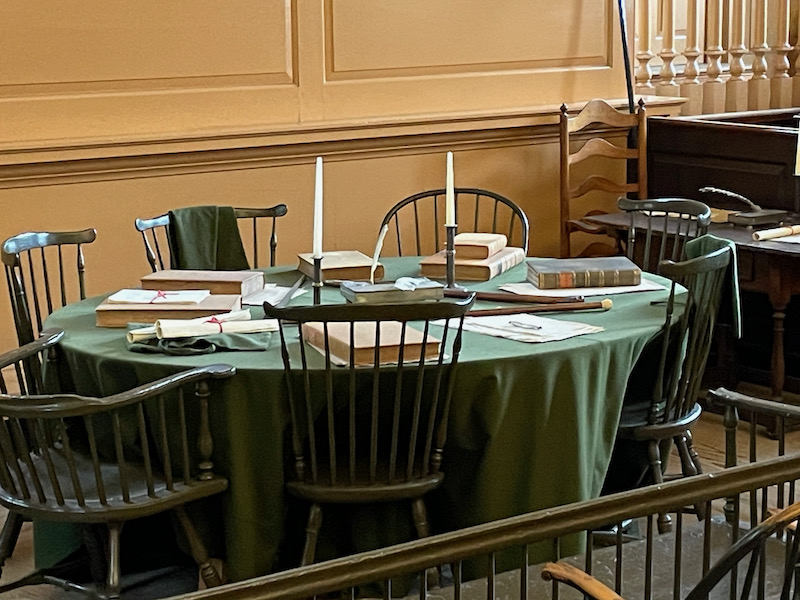
Across the entry foyer is the Assembly Room, where the Declaration of Independence and the US Constitution were both signed. Supposedly the chair is original, although everything else is just "period furniture".
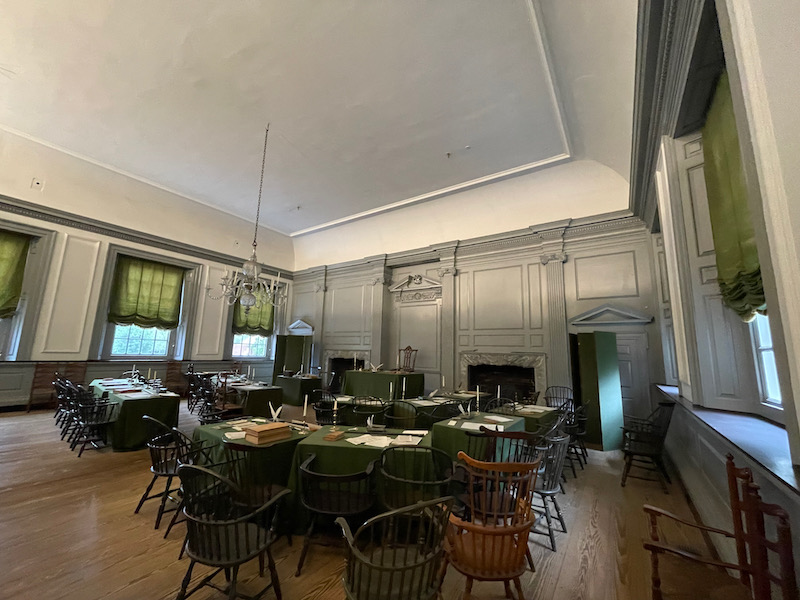

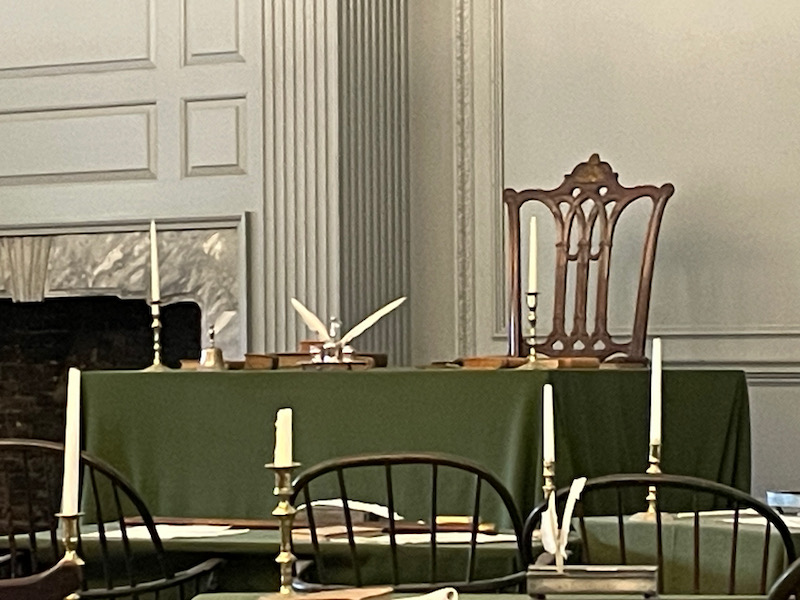
Across the street is a complex that houses the Liberty Bell, along with a lot of information about the significance of the bell and its trip across the country. The bell was commissioned in 1752 and it was created by a British firm. The first bell cracked when it was rung when it arrived in Philadelphia and was recast twice by local craftsmen. The crack that is seen today dates from the early 19th century, with legend saying it cracked while ringing after the death of Chief Justice John Marshall in 1835. Beginning in 1885, the city of Philadelphia, which owns the bell, allowed it to be transported to various expositions and patriotic gatherings. The bell attracted huge crowds wherever it went, additional cracking occurred, and pieces were chipped away by souvenir hunters. It is actually smaller than I expected it to be ... Tom is standing pretty close to it.
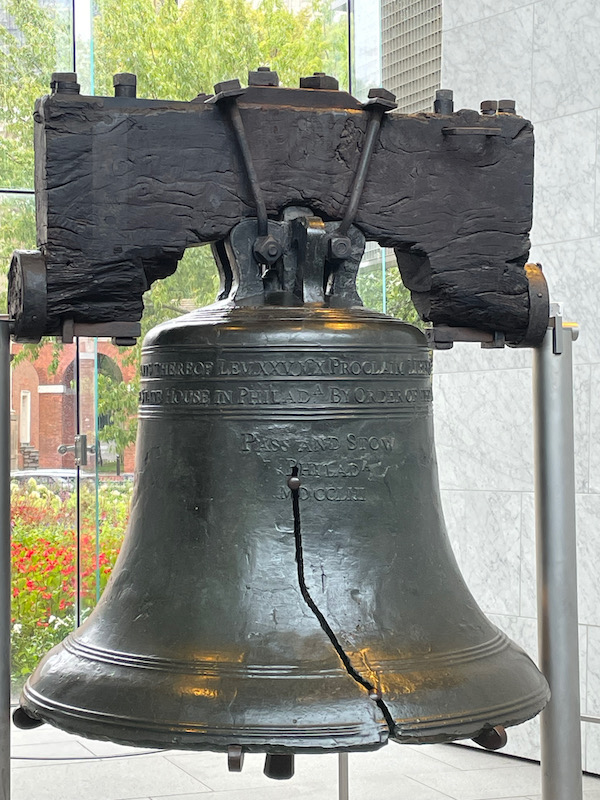
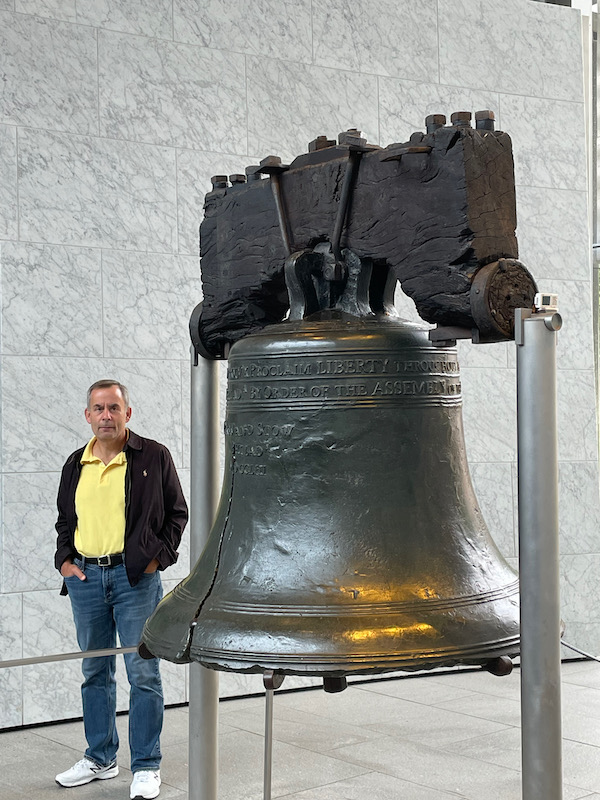
In the Signers Garden is a statue called "The Signer". According to the information on it, it recognizes the spirit and deeds of the individuals who devoted their lives to the cause of freedom. It is modeled on George Clymer, a Philadelphia merchant and statement who signed both the Declaration of Independence and the Constitution.
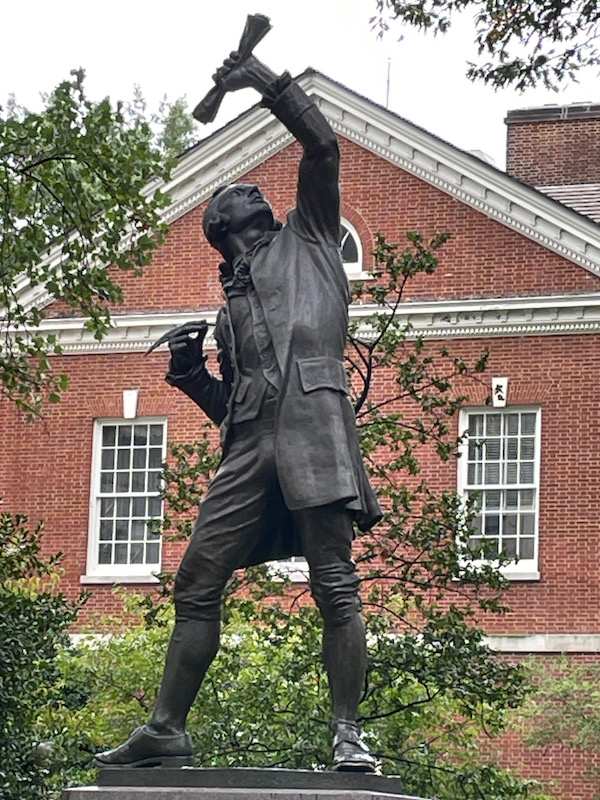
Christ Church was founded in 1695 by members of the Church of England, who built a small wooden church on the site by the next year. It only took 20 years for the the original building to become too small, and then a new church was planned. The main body of the church was constructed between 1727 and 1744, and the steeple was added in 1754. It is considered one of the most beautiful surviving 18th-century structures in the US, a monument to colonial craftsmanship and a lovely example of Georgian architecture. There are wooden pews and some of them have brass plaques marking the pews where important individuals once sat.
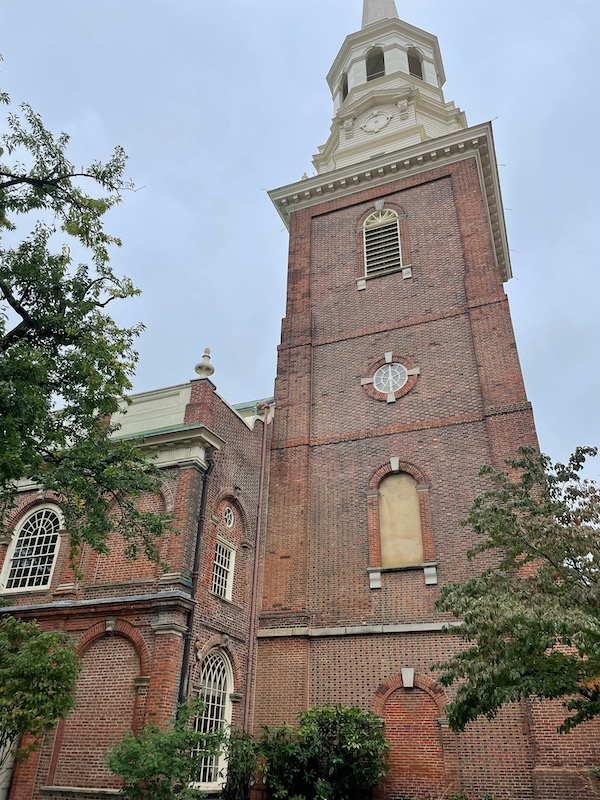
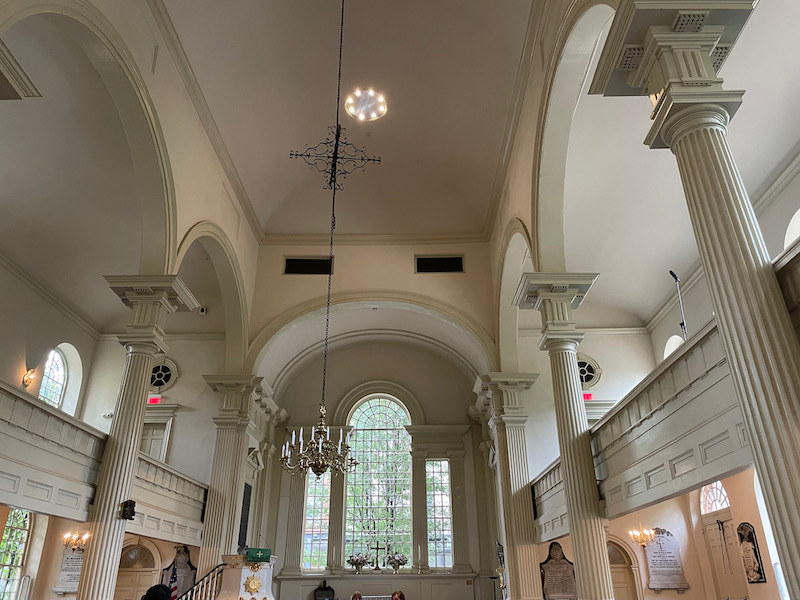
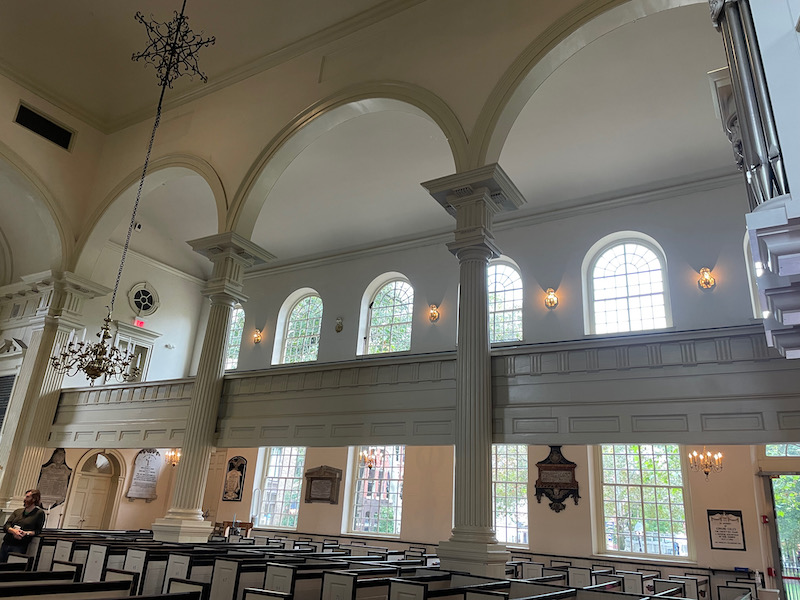

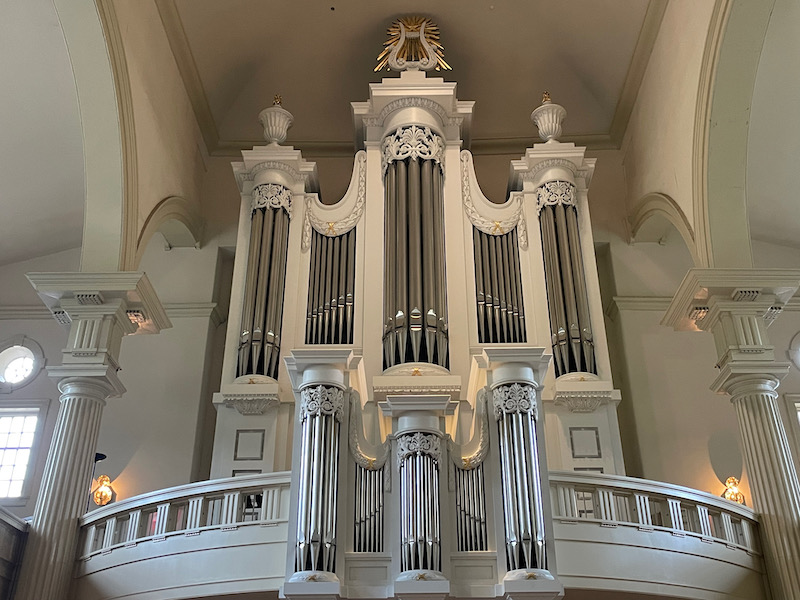
Washington Square was one of the 5 original planned squares laid out on the city grid in 1682. In 1954, the Washington Square Planning Committee decided that, instead of the original proposed monument to Washington, a monument to all soldiers and sailors of the Revolutionary War would be built. The monument includes a bronze statue of George Washington in the center. The remains were those of a soldier that were previously buried in the park when it was used as a cemetery, but it is uncertain if he was Colonial or British.
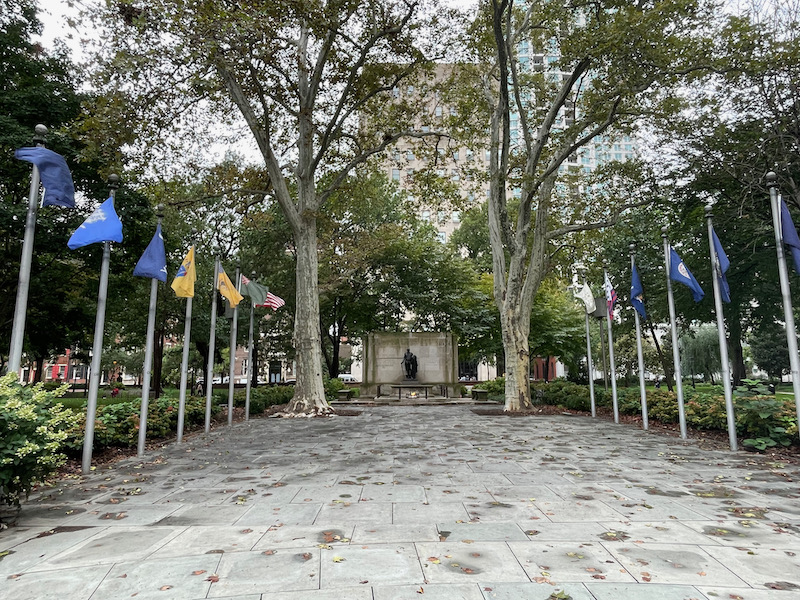
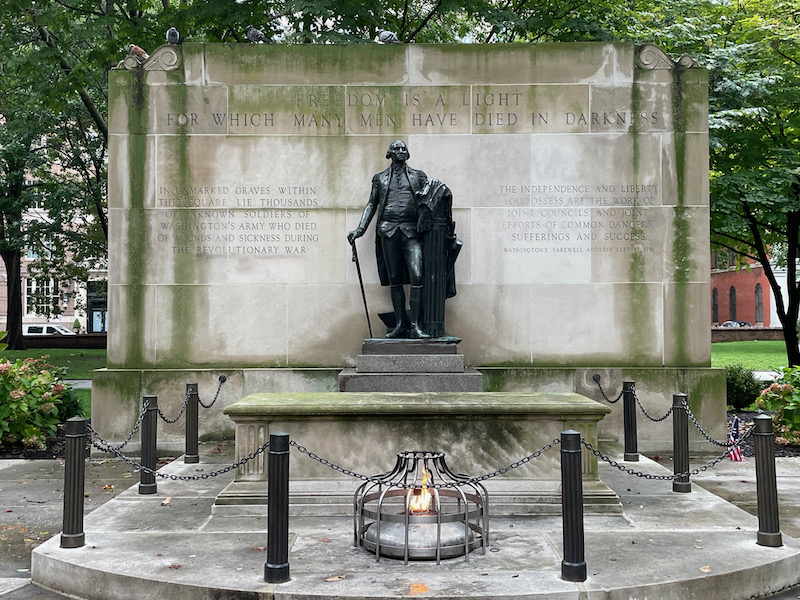
I know, it is only a squirrel, but we don't see many in France!
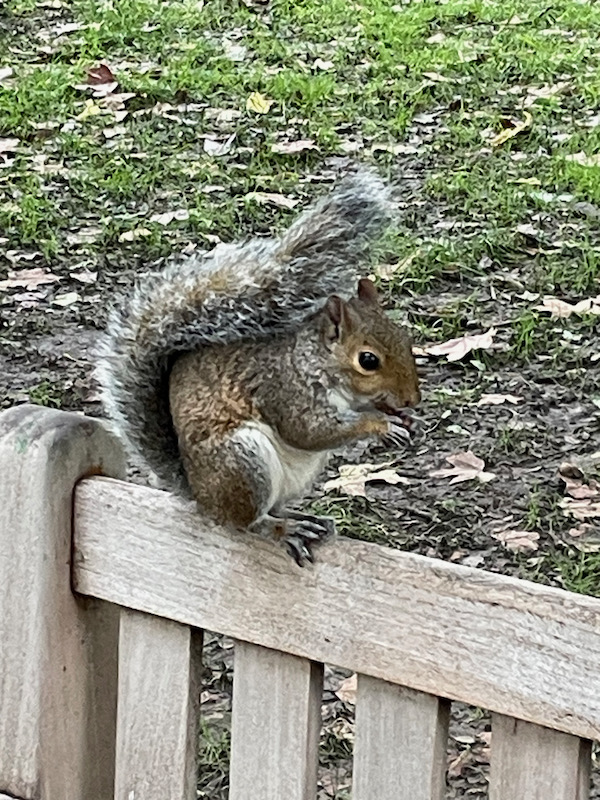
The Walnut Street Theatre was founded in 1808, making it the oldest operating theatre in the United States.
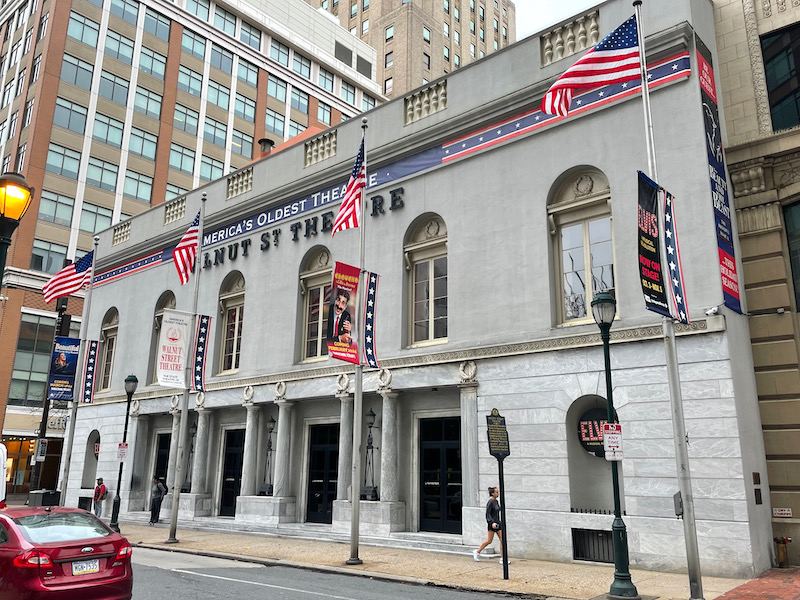
In 1984, the Chinatown Friendship Gate was installed at the entrance to Philadelphia's Chinatown neighborhood. The brightly painted arch is made in the traditional Qing Dynasty style, and was created in part with engineers and artisans from China using tiles from Tianjin, Philadelphia’s sister city.
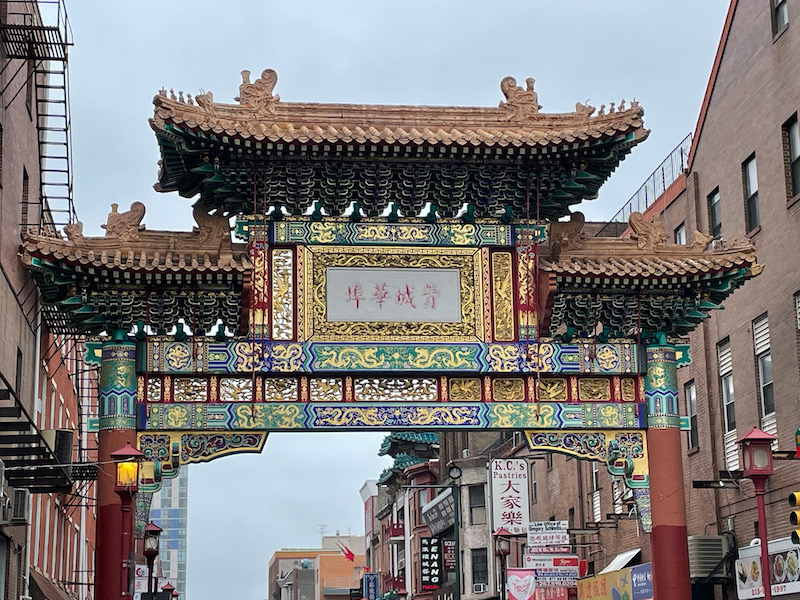
Built using brick, white marble and limestone, Philadelphia City Hall is the world's largest free-standing masonry building and was the world's tallest habitable building upon its completion in 1894. On the facade and inside the building are approximately 250 statues, this 37-foot-tall bronze statue of William Penn that sits at the very top.
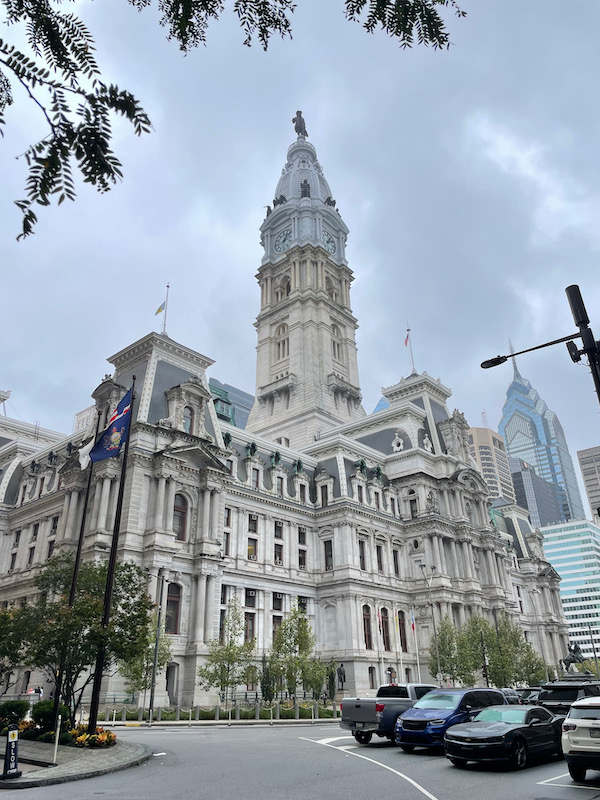
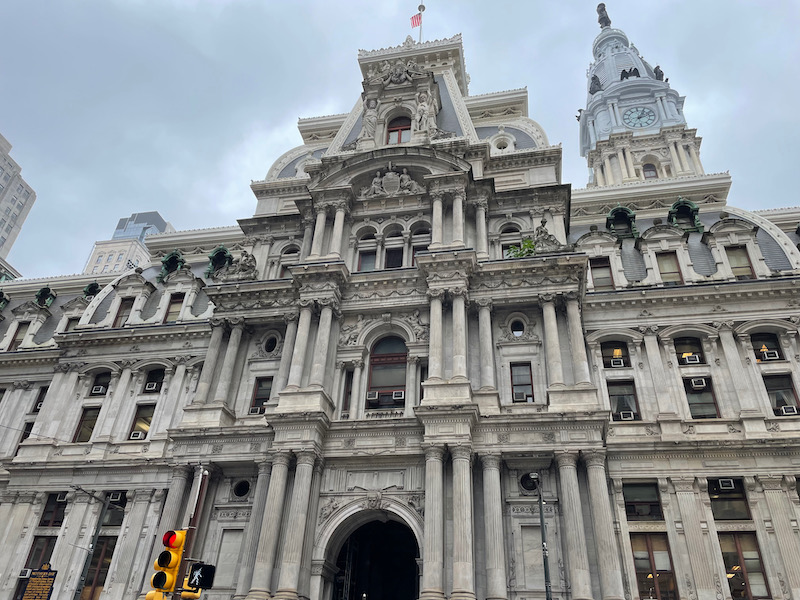
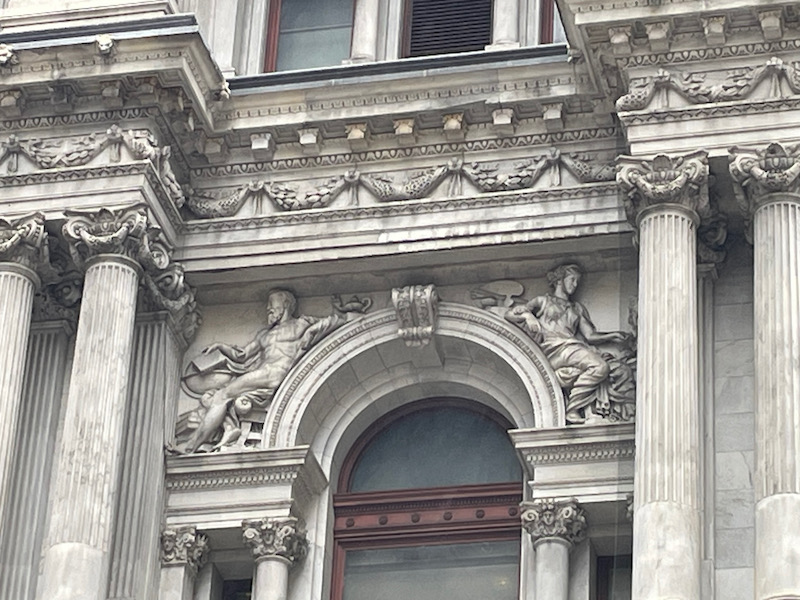
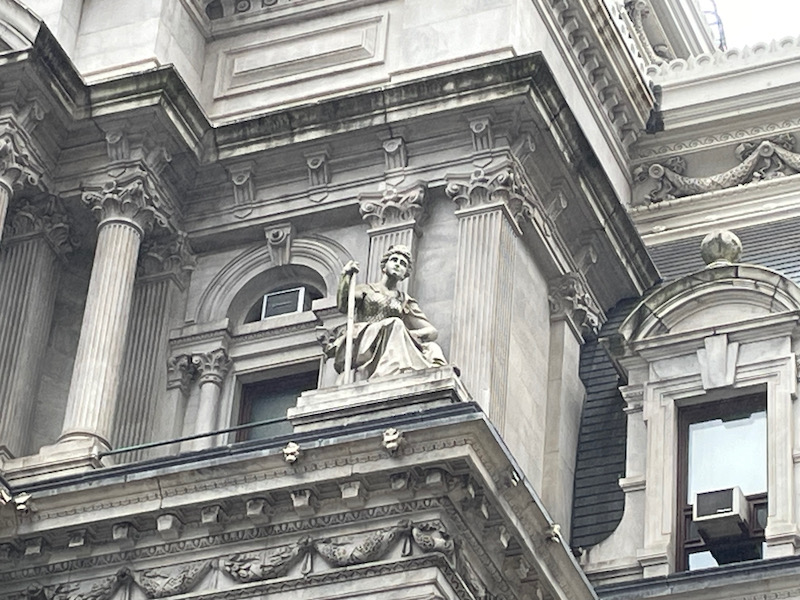
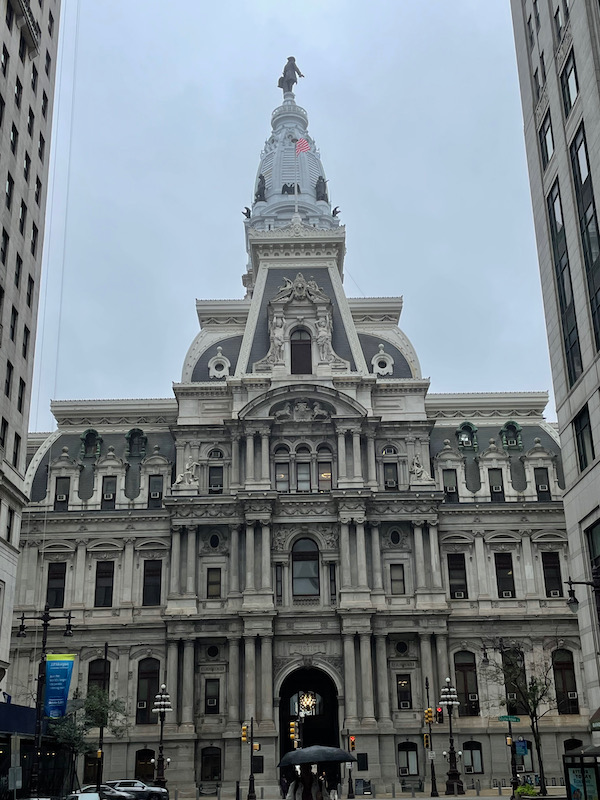
We stopped for coffee at a little independent place (which we like to try) ... and we went with some unique ones. A caramel black salt latte (the salt on top gave it just that special something), and a Juan Peña hand-poured coffee, where they got the beans out, ground them, poured them into a filter before adding the hot water and letting it drip down into the container.
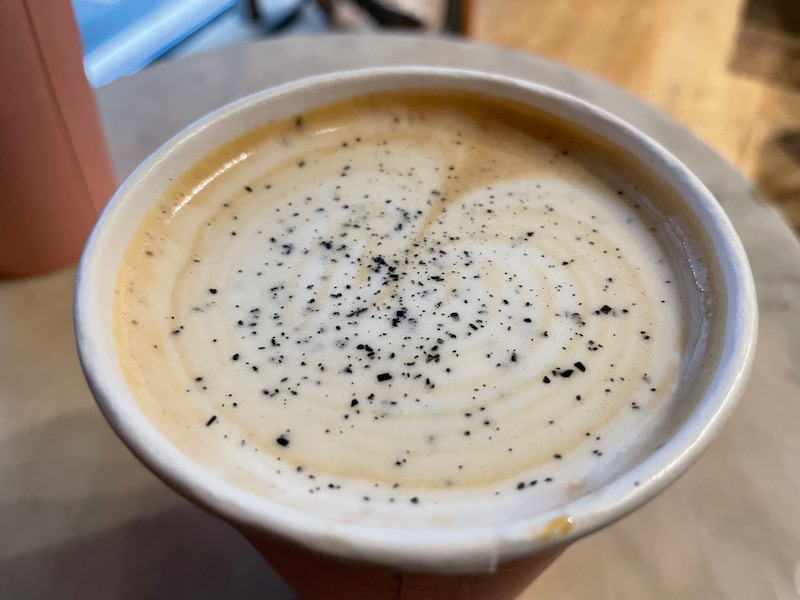
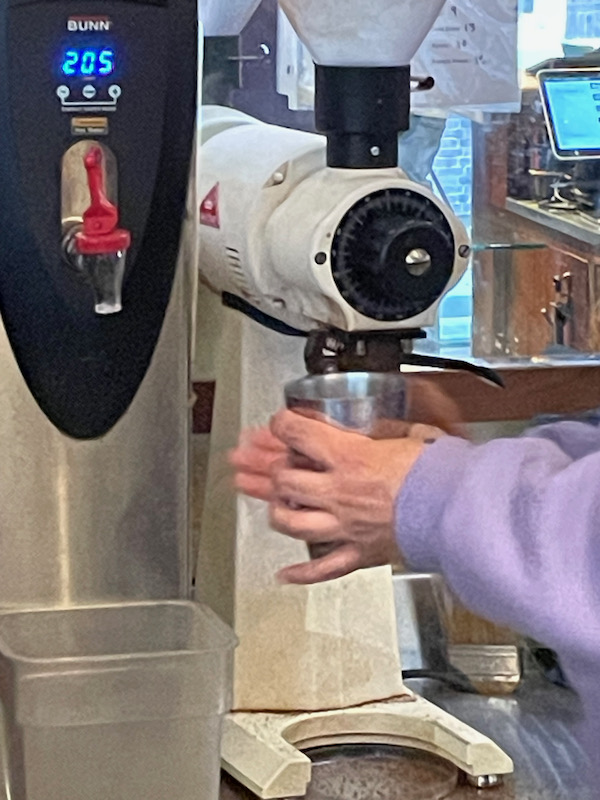
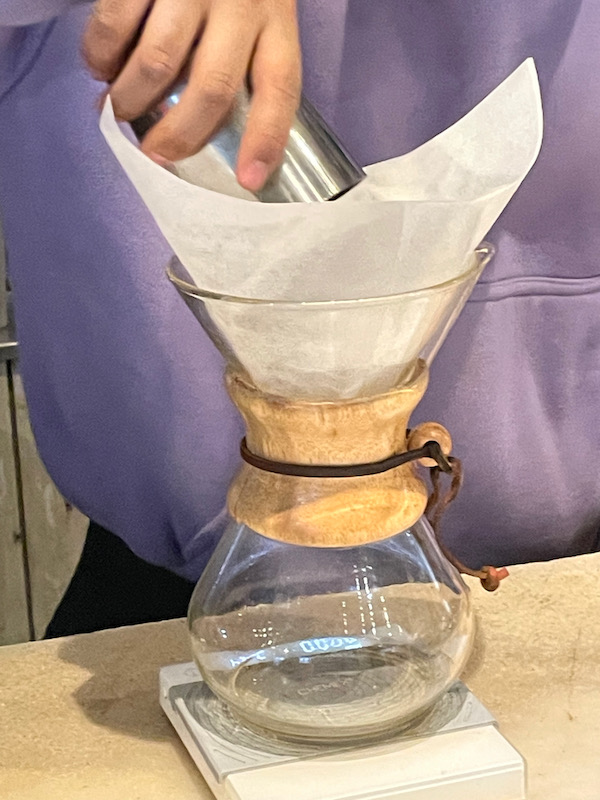
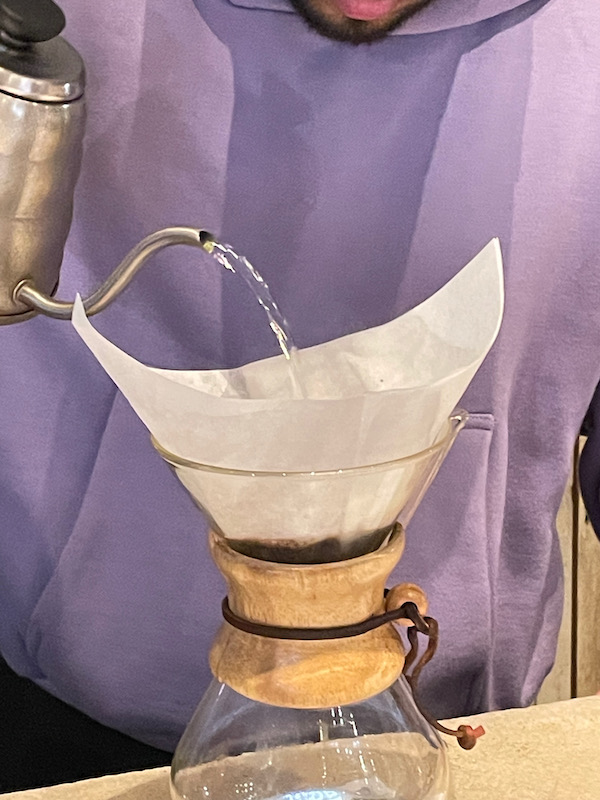
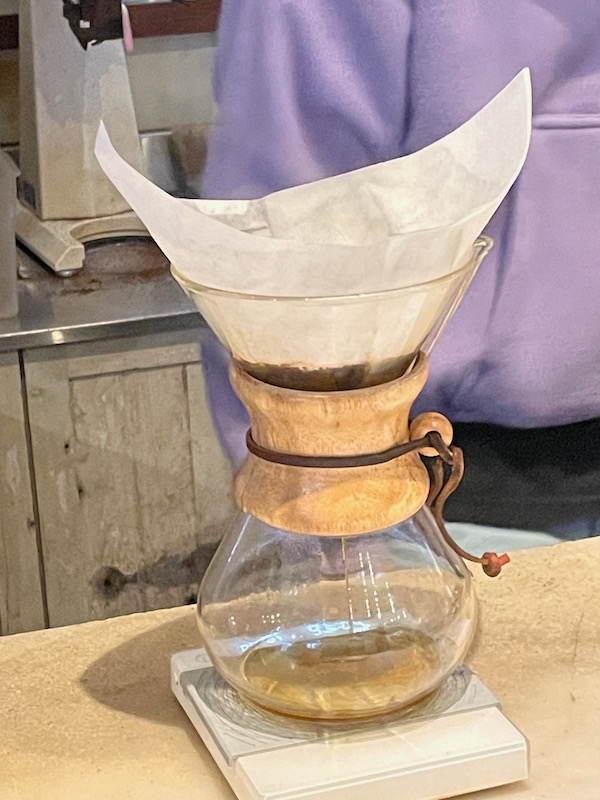
Now a Macy's department store, this is the inside of the Wanamaker Building. The John Wanamaker Department store was the first department store in the US, founded here in Philadelphia. In 1876, he purchased the abandoned Pennsylvania Railroad state to create a "Grand Depot" department store. He had some "new" principles of business (which today seem rather normal): he guaranteed the quality of his merchandise in print, allowed his customers to return purchases for a cash refund, he offered the first restaurant to be located inside a department store, and he invented the price tag. A bit of trivia: much of the 1987 movie Mannequin was filmed here, as was the 1991 sequel, Mannequin Two: On the Move.
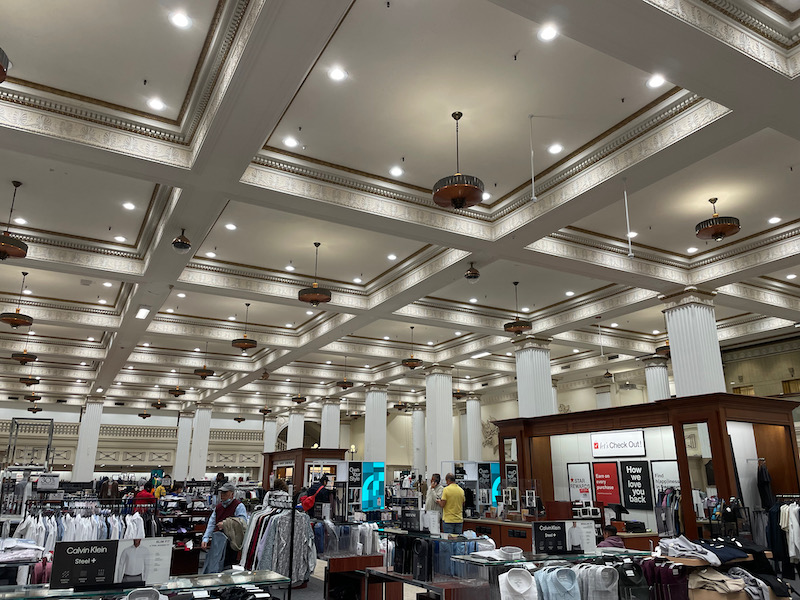
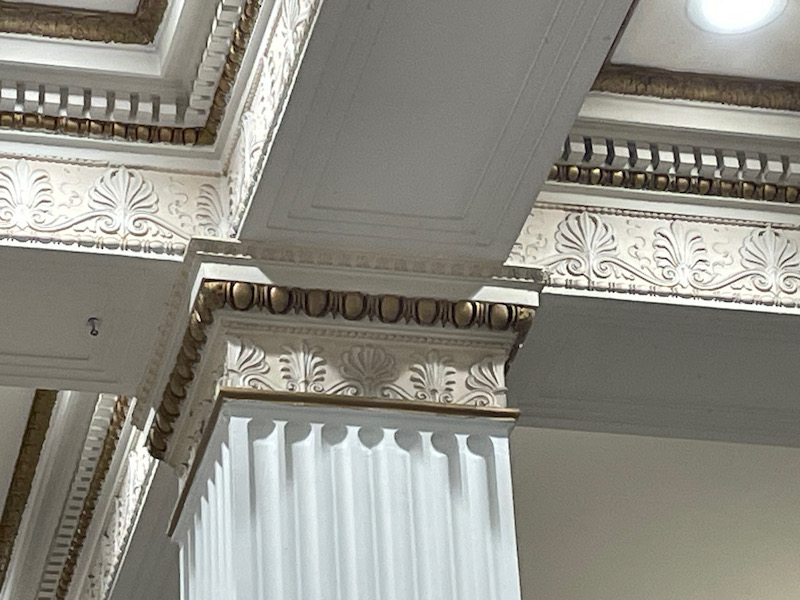

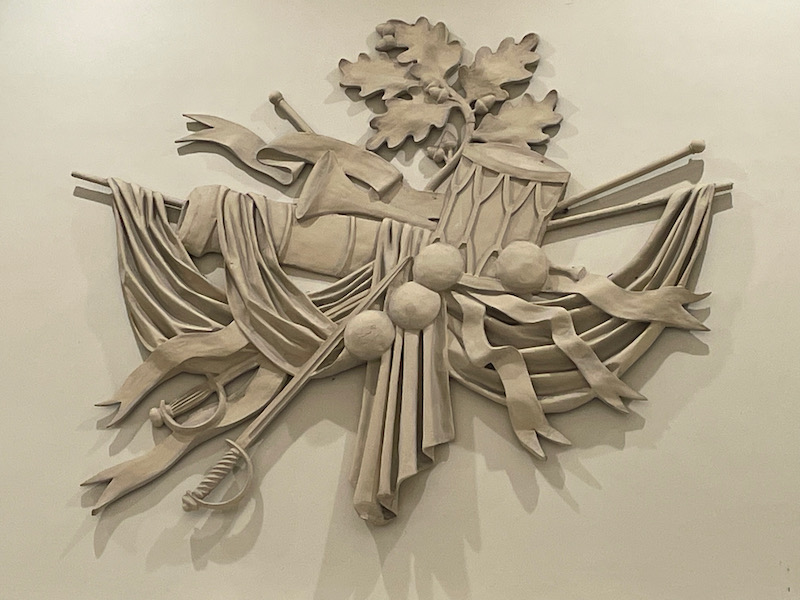
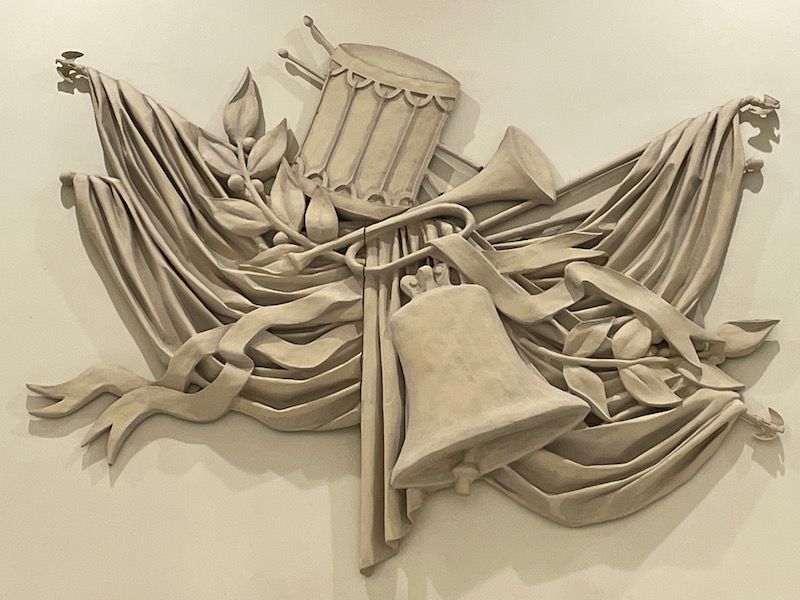
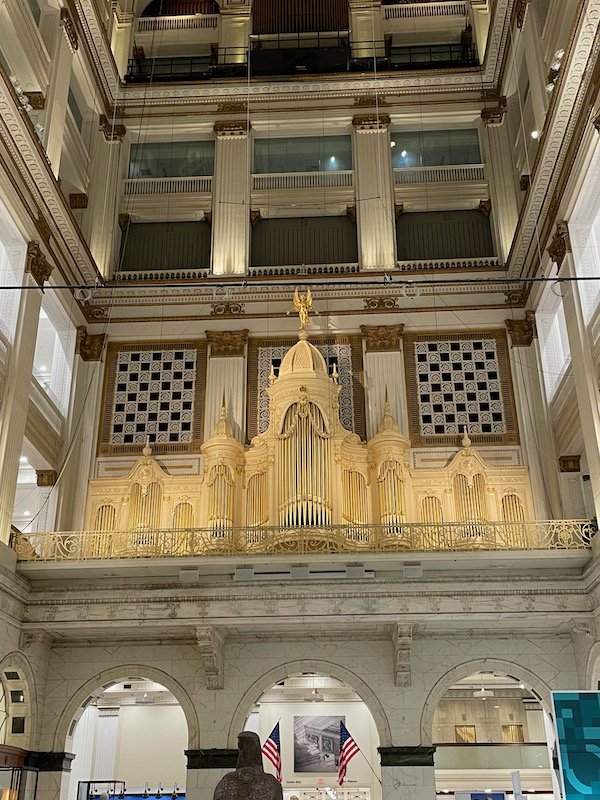
A few very interesting buildings architecturally on our way back to the B&B at the end of our 1-day stop in Philly.
